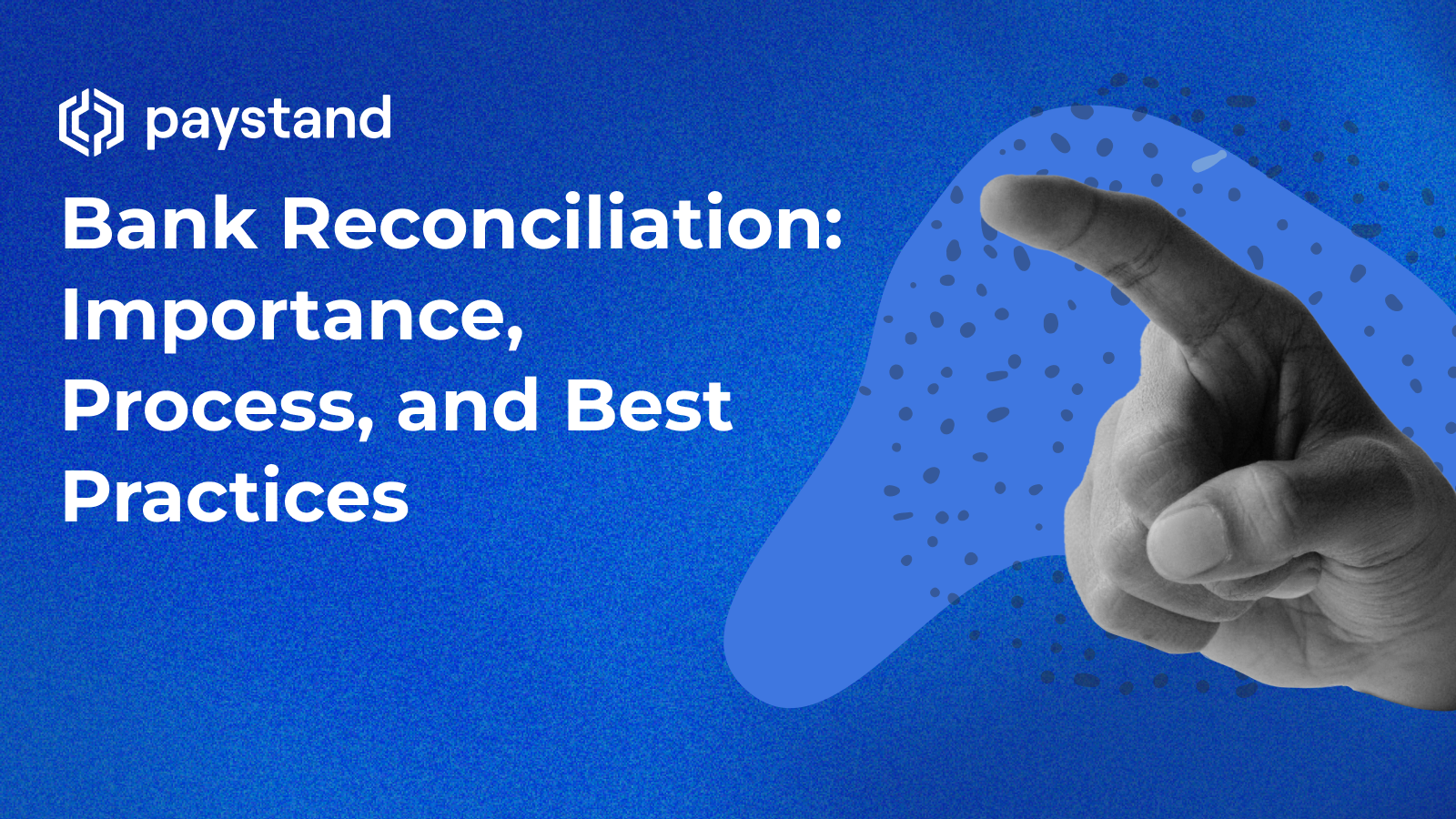Bank Reconciliation: Importance, Process, and Best Practices

Table of Contents
- What is bank reconciliation?
- Why do businesses need bank reconciliation?
- Bank reconciliation process: Step-by-step
- Why bank reconciliation is important
- Challenges in bank reconciliation
- Best practices for bank reconciliation
Key Takeaways
- Bank Reconciliation Essentials: Aligning internal records with bank statements helps finance teams ensure financial accuracy and detect discrepancies.
- Importance of Reconciliation: Regular reconciliation improves cash flow visibility, reduces error risks, detects fraud, and aids in tax preparation.
- Three-Step Process: Compare balances, adjust for discrepancies, and record adjustments to align cash accounts accurately.
- Common Challenges: Issues like bank fees, uncleared checks, and returned deposits often require adjustments during reconciliation.
- Best Practices: Consolidate accounts, set a regular reconciliation schedule, and leverage automation for efficiency and accuracy.
Accurate cash flow management is vital for any business, and bank reconciliation plays a key role in ensuring financial accuracy. By comparing internal records with bank statements, finance teams can catch errors, detect fraud, and align their cash balances. This guide explores the essentials of bank reconciliation, the steps involved, and best practices to help businesses maintain clear, reliable financial records.

What is Bank Reconciliation?
Bank reconciliation is essential for cash flow management, enabling finance teams to verify bookkeeping records and accurately assess available cash. The process involves comparing external bank statements with internal cash accounts in the general ledger, identifying discrepancies, and adjusting for any unrecorded transactions. By aligning these records, businesses gain a reliable view of cash on hand, which is essential for financial accuracy and fraud prevention.
Why Do Businesses Need Bank Reconciliation?
A company’s internal cash balance often differs from its bank balance due to timing, fees, errors, or, in some cases, fraudulent activity. This process helps finance teams resolve these discrepancies, providing a more accurate view of cash flow and safeguarding against misreporting. Bank reconciliation is crucial to maintaining financial clarity, making informed decisions, and identifying any irregularities.
Bank Reconciliation Process: Step-by-Step
Bank reconciliation can be broken down into three main steps:
- Compare Balances: Start by comparing the cash balance in the company’s general ledger with the cash balance on the bank statement. Discrepancies often arise from bank service fees, outstanding checks, electronic transfers, and other timing differences.
- Adjust for Discrepancies: Update each balance to account for any transactions recorded on one but not the other. This includes adding fees, interest, or uncleared checks to ensure both records are accurate.
- Record Adjustments: Once the discrepancies are accounted for, record these changes in the general ledger. Over time, this will align your ledger’s cash balance with your bank’s records as outstanding transactions clear.
Types of Bank Reconciliation Statement
Bank reconciliation statements come in several types, each suited to different needs:
- Simple Reconciliation: Compares bank and cash book balances, identifying discrepancies like outstanding checks and deposits in transit.
- Adjusted Balance Method: Adjusts both bank and cash book balances for unrecorded items like fees or interest, providing a more complete view.
- Bank-to-Book: Starts with the bank statement balance and adjusts for items until it matches the cash book.
- Book-to-Bank: Begins with the cash book and adjusts for missing bank transactions to reconcile with the bank statement.
- Partial Reconciliation: Focuses on specific transaction categories (e.g., deposits), ideal for high-volume accounts.
Each type serves unique reconciliation needs, helping businesses maintain accurate records and smooth cash flow.
Why Bank Reconciliation is Important
Regular bank reconciliation offers several important benefits, enabling finance teams to:
- Identify and Correct Errors: Reconciliation allows finance teams to catch and correct bookkeeping errors that could otherwise lead to inaccurate financial reporting.
- Gain Financial Clarity: With an accurate cash balance, businesses can make better decisions and clearly view their financial health, improving business financial management.
- Track Profitability: Regular review of expenses through reconciliation helps finance teams better understand the profitability of various business activities.
- Enhance Fraud Detection: Detailed expense review makes it easier to spot suspicious transactions or fraudulent activity.
- Prepare for Tax Filing: Accurate income and expense records simplify tax preparation and ensure compliance.
- Capture Tax Deductions: Proper reconciliation highlights tax-deductible expenses that can improve the company’s bottom line.

Challenges in Bank Reconciliation
While bank reconciliation is vital, some challenges commonly arise, including:
- Bank Service Fees: Banks often charge service fees that appear on statements but aren’t immediately reflected in the company’s books. These fees require adjustment during reconciliation.
- Interest Income: Interest accrued in the bank account is typically recorded only when it appears on the statement, so this amount needs to be added to the books.
- Uncleared Checks: Payments issued but not yet processed by the bank can create temporary discrepancies. These are adjusted for during reconciliation.
- Returned Deposited Checks: Sometimes, checks are returned due to stop orders, insufficient funds, or other issues. These must be adjusted in the books to prevent overstating cash.
Best Practices for Successful Bank Reconciliation
To make the bank reconciliation process as efficient and accurate as possible, consider these best practices:
- Consolidate Accounts: Closing inactive accounts and moving funds to active accounts can streamline reconciliation.
- Set a Regular Schedule: Regular reconciliations ensure timely detection of discrepancies and prevent backlogs.
- Leverage Automation: Automated bank reconciliation tools reduce manual effort, improve accuracy, and allow finance teams to keep up as transaction volume grows with business scaling.
Bank reconciliation is crucial for businesses to maintain financial accuracy, detect fraud, and manage cash flow effectively. Learn more about the benefits of finance automation here to explore how automation can streamline bank reconciliation and other AR processes.





%20(1)%20(1).jpg?width=100&height=100&name=IMG_3752%20(1)%20(1)%20(1).jpg)